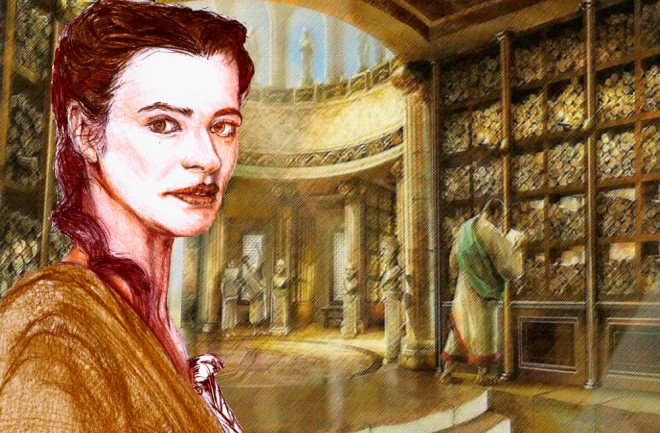The word “engineer” is somewhat of a modern marvel. It was used in the military during the American Revolution to describe officers and soldiers assigned to build fortifications. Civilians began using it in the 1800s, and the first professional engineering association was founded in the U.S. in the 1840s.
The ancient world didn’t have the term engineer to describe the scholars and scientists whose discoveries contributed to the advancement of engineering. But ancient engineers helped to create equipment and equations that are still used today.
Some of these ancient engineers were women. Here are three ancient women engineers whose discoveries made a mark on scientific history:
1. Maria Hebraea
Time period: First Century A.D.
Location: Alexandria, Egypt
Historians don’t know much about Maria Hebraea as a person (they can’t even agree on her name), but they have record of who she was as a scientist. Also referred to as Maria Phrophetissa or Miriam, she created new and improved alchemical equipment for the purposes of heating and distilling. She worked with clay, glass and metal to engineer laboratory equipment.
Maria liked to work with glass when possible because she could see the fluids inside. She is credited with inventing the balneum Mariae, or Mary’s bath, which was essentially a double boiler. Historians aren’t sure if she invented or improved the apparatus, but it is named in her honor and is still used today.
Her work with glass equipment in the laboratory was advanced for her time. She also invented (or improved) a distillation apparatus called the simple still and the tribikos, a more complex distillation device.
Maria also developed a lead-copper sulfide that artists still use as a pigment and is referred to as “Mary’s Black.” Although none of her original writings survived, she is remembered by scientists in future generations who described her work “with great respect, even awe.”
Read More: The 50 Most Important Women in Science
2. Hypatia
Time period: Died A.D. 415
Location: Alexandria, Egypt
Historians don’t agree on Hypatia’s birthdate, and it’s thought she was born sometime between A.D. 350 and 370. Her father was a scholar and a mathematician, and Hypatia inherited his scientific talents.
Scholars agree that Hypatia was widely known and respected in her time as a scientist, mathematician and teacher. One source described her as the “greatest mathematician then living in the Greco-Roman world, very likely the world as a whole.”
Scholars don’t agree on whether she deserves credit for two inventions. The first, the hydrometer, was designed to measure liquids and could be used for various purposes, including measuring medicines. A draft of a letter from one of her students, Synesius, has been preserved, and in it, he asked her for instructions on how to build a hydrometer. Some scholars have argued this was evidence she was the creator of the equipment.
Another letter from Synesius addressed Hypatia’s work on her astrolabe, an apparatus that served as a model of the sky and could be used to answer astronomical questions. Scholars have long debated whether Hypatia was the true inventor of the apparatus.
However, historians agree that Hypatia suffered a violent death in A.D. 415. At the time, Alexandria was politically unstable, and Hypatia was a known advisor to the governor. She was targeted and attacked by a mob.
Some have described Hypatia’s death as the end of tolerance for women scientists in the Western world. For more than a millennium, women were barred from schools and academies. Such exclusion might also be why historians have minimized her contributions and suggested others were to credit for the inventions long associated with her.
Read More: Five Female Inventors and how Their Inventions Changed the World
3. Keng Hsien-Seng
Time period: Lived before A.D. 975
Location: China
Like other ancient engineers, little was known about the life of Keng Hsien-Seng, but her work has lived on. Hsien-Seng’s father was also a scholar, and she became a known scientist and teacher.
Wu Shu mentioned Hsien-Seng in writings from A.D. 975 as being invited to the royal palace so the emperor could watch her technique for extracting silver from ore using mercury. Hsien-Seng also developed a technique for extracting oil from a camphor tree, a substance that has been used to make topical painkillers, cleaners and perfumes.
Although Hsien-Seng’s accomplishments and reputation were likely why the emperor sought to meet with her, Western historians have minimized her work by describing her as performing “magical tricks” in the royal palace.

